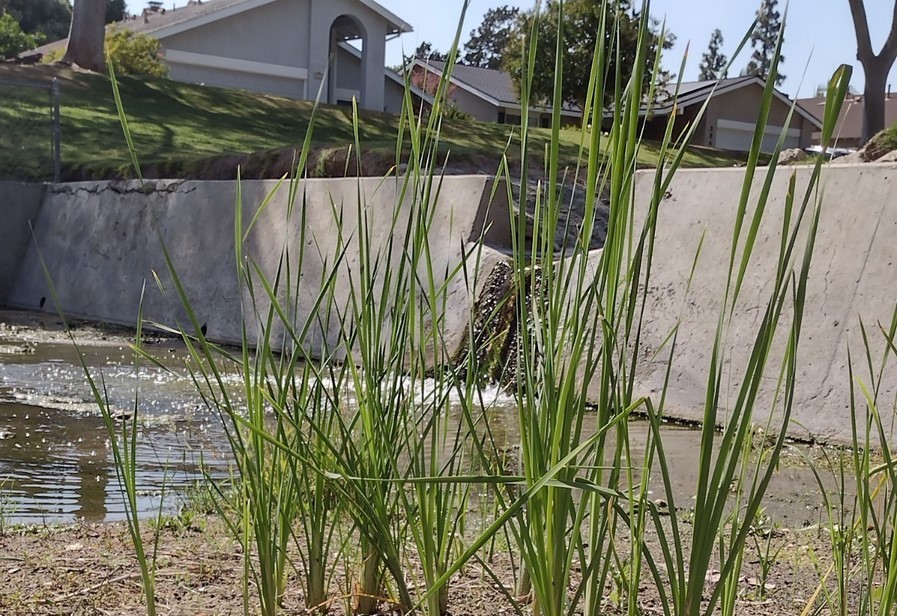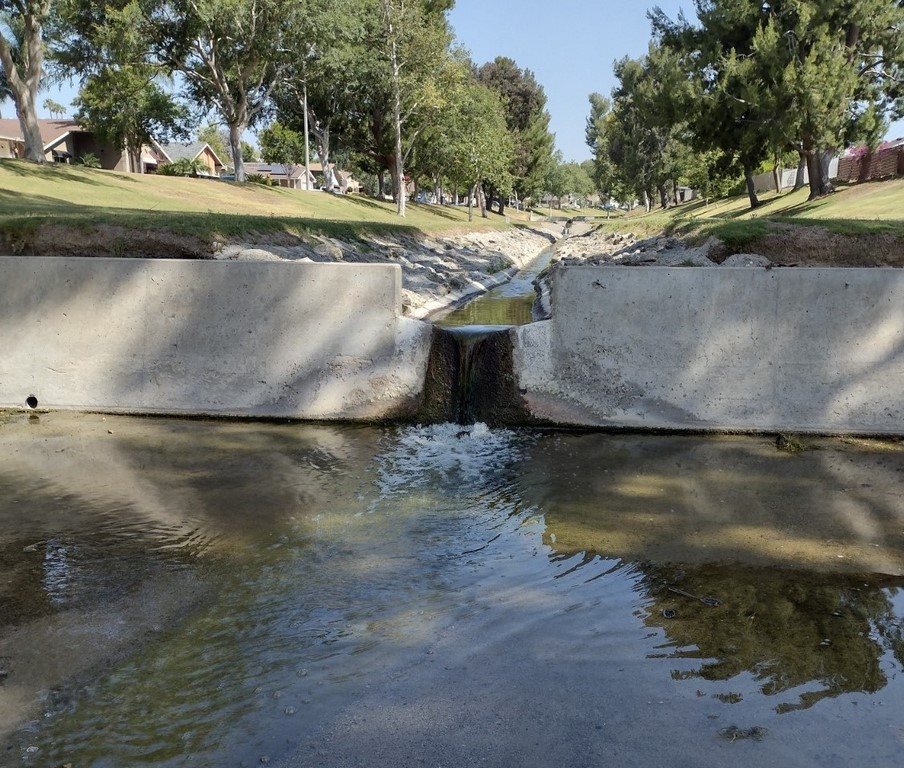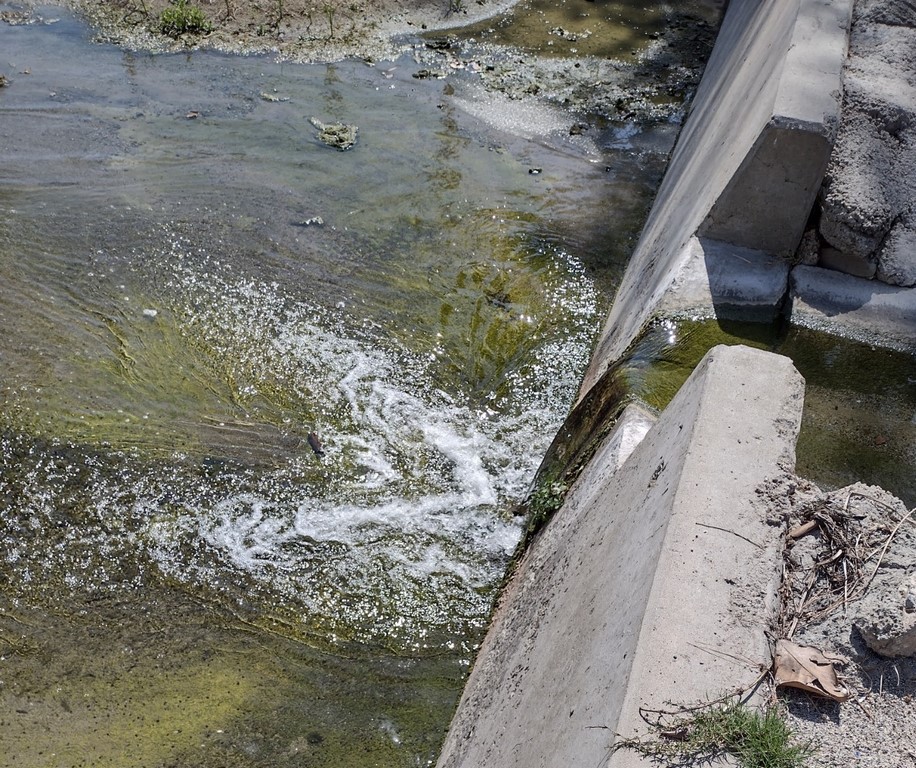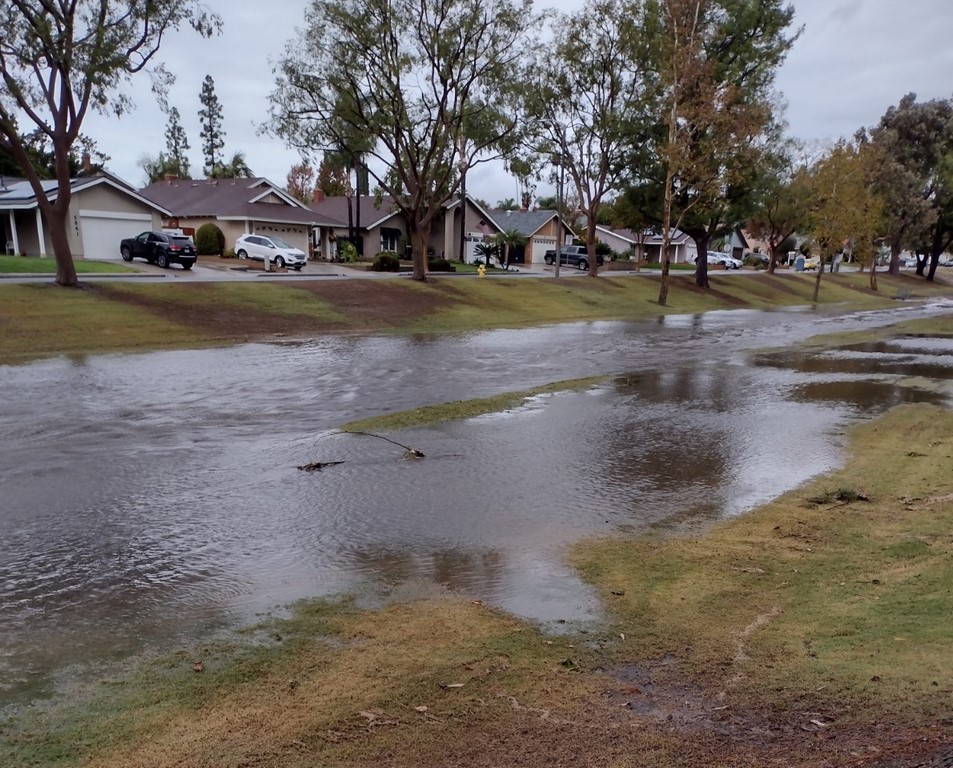Beholding a Concrete Stream


Appreciating water doesn’t always require sweeping ocean vistas or cascading streams, explains writer and naturalist, Jamie Nestor. As he points out in this personal essay, the beauty and fascination of aquatic environments sometimes exist in surprising places, but can be no less inspiring.
By Jamie Nestor
Our family has lived in our home in Yorba Linda, CA, since December 27, 1996. It’s been and remains a wonderful place to live and raise a family. It’s our forever home. From the moment my wife, Lien, and I walked in the backyard, I knew this was the place – all for one very powerful reason that immediately captivated my attention, the presence of water.
The back of the property opens onto a large greenbelt with sweeping grass slopes and a variety of mature trees. A concrete stream flows down the center, creating a beautifully tranquil space. Rather than being boxed in a small backyard we are, in effect, connected to an infinitely larger landscape.
The stream is fed by a natural spring in the hills above our neighborhood. Even in times of the most severe drought, I have never once seen it run dry, and the water is almost always crystal clear.
Centered in the view from our backyard is a spillway in a low concrete wall that feeds a large basin where water collects, along with sand, silt, emergent plants, insects, reptiles, amphibians and birds. It’s an ever-changing and decidedly accidental wetland area. During rain, the stream’s banks rise while dramatic storm runoff surges toward the nearby Santa Ana River, and eventually to the Pacific Ocean.
For many people, this scene would go unnoticed — it’s just grass and what some describe as a drainage ditch. To my family and me, however, it’s been a constant source of fascination and delight. The stream and especially the spillway, might be utilitarian in appearance and intended purpose, but, by bringing us into constant proximity to moving water, our daily lives have been elevated – all the while stoking my own constant curiosity.
UNEXPECED BEAUTY
Although my intense interest in this ordinary scene may seem odd to some, it comes as no surprise to me. I’ve always been fascinated by water, especially in nature. Growing up in the suburbs of Southern California, I learned to swim in the ocean and spent my youth and adult life seeking the water’s edge.
My dad was a great observer of the natural world and I inherited his insatiable sense of curiosity. He was an accomplished fisherman and many of my fondest memories are of the two of us catching fish, and sharing observations about the nature around us.

This is why I’ve found so much in the stream. It’s all in how you look at it. Like most aquatic spaces I’ve experienced, this waterway is ever-changing, and when you get tuned into the nuances of its behavior and processes on a daily basis, there’s always something interesting to observe.
The spillway is where those processes are the most intriguing. As mentioned above, it fills with material that supports a sudden micro-ecosystem. The city maintenance crews infrequently clear the basin and all the life washes away. The same thing happens during rainstorms. As sad as that may seem, it’s amazing how quickly it regenerates. Because the rest of the stream is surfaced in a rough mix of concrete and stone, and it constantly flows, not much material collects, except in the spillways.
A WEB OF LIFE
More than anything, the cycles of life are the most fascinating. Plant material takes hold within days and voila, it’s like an enormous, constantly regenerating terrarium.
The frogs are stars of the scene. Back when we first moved in, and spring came along, an army of frogs gathered in the spillway and filled the air with an amphibious symphony. It’s surprisingly loud and when combined with the sound of the falling water, it’s a constant beautiful noise.
In a purely practical sense, the sound of the stream helps mask the constant hum of distant traffic noise, and replaces it with a set of sounds that have a profoundly beneficial effect on the human psyche.
Across the greenbelt, the other side is bordered by a sidewalk and a street. Not surprisingly, the space is used constantly by people of all ages, joggers, parents pushing strollers and kids of all ages on bikes and scooters. Dogs are a constant presence and many do seem to delight in the stream, as do many of their human companions. In that sense, the green belt and its stream are a valuable public asset.
I’m not the only one who feels this way. Several years ago, I met one of our neighbors who lives several houses up the street. He is a successfully retired gentleman who, like me, values the stream. His home is also proximate to a spillway and we immediately bonded on our observations and feelings. He also purchased his home because of the water.

And, the countless hours I’ve spent with my two sons, Joshua and Jackson, at the spillway are some of my most cherished experiences as a parent. I once cut out a piece of plywood to partially block the weir where water flows out of the spillway. The 30-by-40-foot vessel would fill to about a foot deep, creating a pond where much to our mutual delight we would play with remote controlled boats.
In its own quiet way, this modest body of water brings people together.
STORMY MOMENTS
Of course, not everyone shares our feelings. Some people have asked if it smells bad, if its polluted, and most of all, does it generate mosquitos, all valid concerns. Fortunately, the source of the water, as mentioned above, a natural spring, and the fact that it always moves cures most of those potential problems. Because the water never stagnates, it never smells and there are no mosquitos.
As for pollution, that’s a more complicated concern. This is an open stream flowing through a suburban environment, where it collects street runoff. It’s also partially fed by a large lake at a nearby golf course. Fertilizer, pesticide and a spectrum of contaminates are inevitable. That’s especially true when it rains.

The surging water during rainstorms is dramatic, a raging torrent rising ten feet along the sloping banks. It’s never threatened to flood our home, but the torrent’s presence is awe-inspiring, and even a little frightening. In first hours of a storm, I’ve noticed that the water is visibly dirty.
Knowing that almost all of the water is washing down storm drains from streets, it’s obvious that the water is flushing the filth from the suburban landscape. Because we go for so long between rain events during drought, the effect is even more pronounced simply because the streets get so dirty.
As the flow subsides, the stream returns to its normal clarity, and calm temperament. After a big storm, the spillway is completely flushed out, and the process starts over.
Yes, there is much to be found at the water’s edge, even if it’s just a concrete stream.
Jamie Nestor is a writer and nature enthusiast living in Yorba Linda, CA.









